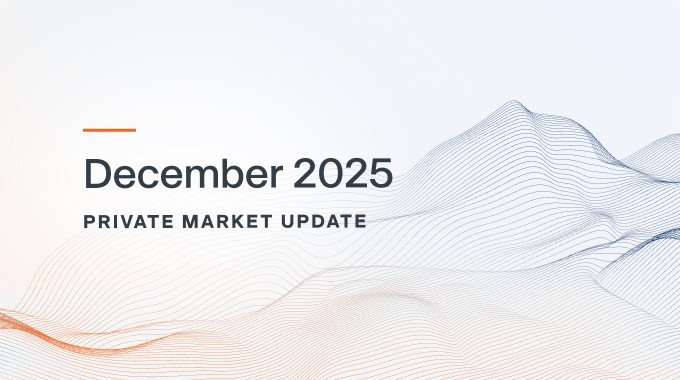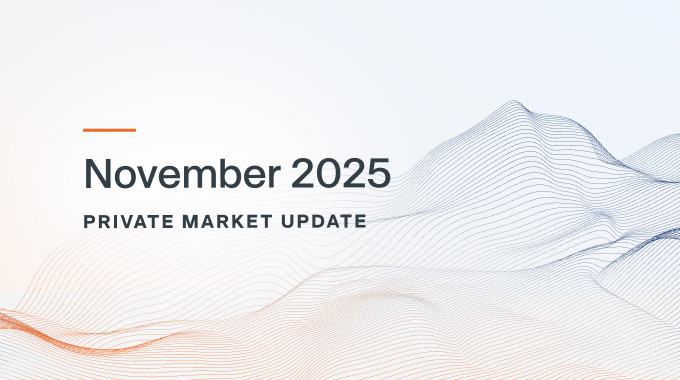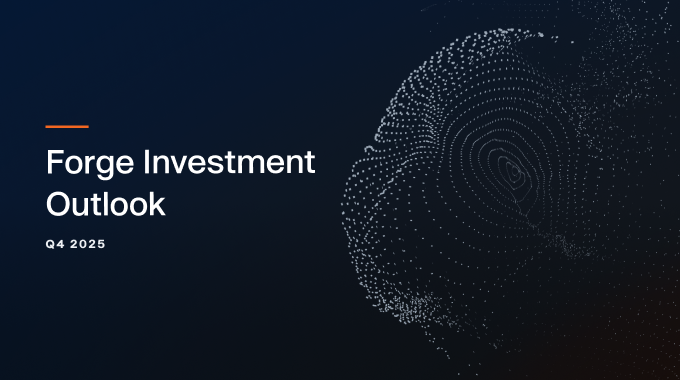Private Market Update October 2025
Government shutdown freezes IPOs, but the private market’s elite keep rising
The U.S. government shutdown that began on October 1, 2025 has frozen one of the most active IPO pipelines in years. With more than 90% of the Securities and Exchange Commission’s staff furloughed, the agency has largely ceased reviewing registration statements. While the SEC’s electronic filing system remains functional, new IPO filings won’t be declared effective by the SEC – effectively closing the IPO window for now.1
Q3 2025 delivered 30 total exit events, nearly matching the 32 recorded in Q4 2021 (see chart below). A resurgent exit market had been signaling renewed investor confidence. But with the SEC sidelined, the pipeline for upcoming IPOs – including Once Upon a Farm and Beta Technologies has stalled.2
A prolonged shutdown could ripple beyond IPOs. M&A activity, which helped push overall exits to multi-year highs in Q3, may also slow if antitrust reviews face regulatory delays.3
Some companies are exploring creative workarounds. For instance, Navan, a corporate travel and expense platform, may rely on a rarely used provision that allows a registration statement to become effective automatically after 20 days unless the SEC intervenes.4
This approach, used briefly during the 2018-2019 shutdown, underscores the goal among late-stage issuers to achieve liquidity despite policy gridlock. While the disruption may prove temporary, the episode may signal just how fragile market optimism can be. Even after the SEC reopens, companies may hesitate to move forward until volatility subsides and investor demand stabilizes.
Indeed, the U.S. government shutdown has, at the very least, slowed down IPO activity. Even when the shutdown comes to an end and the SEC ultimately gets through its backlog, companies may still decide to delay their public market debuts based on how conditions look at that time.5
The market’s recent strength remains concentrated at the top. The Forge Private Magnificent 7 — which includes AI names like OpenAI, xAI, Databricks and Anthropic — gained 34% in Q3 2025 bringing its year-to-date gain through September to 76.4%, well ahead of the S&P 500’s 14.7% through the same period.6
Forge’s AI basket7 of private market companies, similarly advanced, gaining 36.9% in Q3 2025. Other Forge thematic baskets, such as the Aerospace & Defense basket have also yielded positive returns, rising 29.7% last quarter. These thematic baskets — which represent groups of private companies based on industry themes — have outpaced others like Forge’s fintech basket, which posted a more moderate gain of 5.6%, reflecting a cooling trend in capital flows toward the sector.8
Meanwhile, valuations for leading private companies continue to expand. The top 10 private companies ranked by Forge, ranked by Forge Price™ valuation, now collectively exceed $1.6 trillion in value, more than double the $774.7 billion recorded for the Top 10 in 2021. This group has grown at a 673% rate over two years, outpacing even the frothy expansion of the 2021 cycle.9
Concentration and Constraints
However, not all corners of the private market are participating in this rally. The rapid ascent of AI-driven valuations has amplified the concentration of capital among a small cohort of category leaders.
According to Crunchbase data, 46% of global Q3 2025 venture funding flowed to AI companies, and one-third of all capital went to just 18 firms raising $500 million or more, with multi-billion-dollar rounds for companies including Anthropic, xAI, and Mistral AI.10
Outside these mega-rounds, fundraising conditions continue to improve vs 2024 though are more constrained for early-stage companies. Global venture funding in Q3 rose 38% year-over-year to $97 billion driven largely by massive AI rounds, while late-stage investment grew 66% year-over-year in the quarter and seed-stage funding was up just 10% as late-stage AI deals soak up much of the available capital,11 according to Crunchbase data.
The imbalance between capital flowing to early and seed stage vs. capital flowing to late stage is starting to show in the labor market as well. Several high-profile private companies, including Snorkel AI, have implemented layoffs, reflecting pressure to manage current cash flows effectively, especially for companies that are working to grow into valuations assigned just before the market downturn.12
A recent survey by Affinity echoed these dynamics, with investors broadly expecting valuation corrections among 2021-2022 vintage unicorns. Many companies that raised at elevated valuations during that cycle now face limited access to capital or exit pathways – a reminder that not every unicorn can remain a unicorn indefinitely.13
The shutdown has exposed a private market environment characterized by both resilience and fragility: resilience at the top, where capital concentration and growth remain unprecedented, and fragility across the broader ecosystem, where liquidity and sentiment are uneven.
Even once the government reopens, the backlog at the SEC may delay activity well into Q4 or beyond. Meanwhile, investors are increasingly distinguishing between high-quality growth stories and those still struggling to find product-market fit.
For now, the private market remains bifurcated – buoyed by exceptional strength among AI leaders, but constrained for the many others waiting their turn at the public market gate.
With so much capital flowing to the largest AI names, it can be hard for other private companies to stand out, even if unicorns were minted at one of the fastest rates last quarter.14
This left a large pool of companies fending for other limited funding. Such limited funding could exacerbate a cooling labor market that has emerged within both public and private market companies, including some AI unicorns.
So, even if private market deal flow picks back up after the government shutdown, there does not seem to be a rising tide that will lift all boats. Instead, a handful of companies are riding an unprecedented wave of funding and noteworthy valuations, while others are figuring out how to stay afloat.
Private market outpaces strong September for public markets
While the public market bucked the historical trend of a lackluster September,15 the overall private market performed even better, notwithstanding the concentration trends noted above. The equal-weighted Forge Private Market Index (FPMI) jumped 7.8% and the cap-weighted Forge Accuidity Private Market Index (FAPMI) gained 5.9%.16 The tech-heavy QQQ wasn’t far behind at 5.4%, while the S&P 500 returned a solid 3.6% for the month, buoyed by the continued strength of the Public Mag 7.17
September buy-side interest cools, but stays above 50%
After four straight months of an increasing percentage of buy-side indications of interest (IOIs) in the Forge marketplace, the distribution shifted back somewhat towards sell-side interest in September. Still, the balance of buy vs. sell IOIs remained tilted toward the buy side, and monthly fluctuations are not uncommon.18 That said, with all the other echoes of 2021 currently ringing, it’s worth keeping an eye on this space to see if there’s a continued shift in sentiment toward the sell side.
Trade premiums tick up as distribution widens further
The median trade premium/discount to last primary funding round inched up in September, getting close to an equilibrium at –5% for private market shares trading at the 50th percentile. The more noticeable trend, however, is how the gap between those at the top and bottom continues to widen. Even with those at the low end rising slightly from a –80% discount in August to –78% in September, the gains at the top were even greater, jumping from 84% to 94% during the same period.19
While the government shutdown may have put the brakes (at least, temporarily) on what was shaping up to be a robust IPO revival, the underlying dynamics of the private market continues to reveal both resilience and divergence. The gains among notable private AI companies underscore a possible new era of concentrated growth — one that rewards scale, innovation and investor conviction, even amid uncertainty. For others, however, liquidity pathways remain narrow and patience may be tested as capital allocators grow more discerning. When the SEC becomes fully operational and the IPO window eventually creaks back open, the next wave of public IPOs may tell a more nuanced story: not simply one of recovery, but of redefinition in how value, timing and opportunity intersect across public and private markets.



